“O mosy quince, hangyng by your stalke,
The whyche no man dar pluk away ner take,
Of all the folk that passe forby or walked,
Your flowres fresshe be fallyn away and shake”
Unlike Chaucer who often seemed to encounter in the wild, the fruit he* described in ‘O Mosey Quince!’ as having cheeks ‘enbolned lyke a melow costard, Colour of orenge your brestys satournad”, I rarely come across local English quinces on the tree, let alone for sale in local stores. That is my fault, not the fruits. I have seen them sold by the side of the road in French villages of pale stone, and hanging from Spanish hedgerow branches that lean into the light to set their fruit; amid cork oak forests near Tempio Pausania in Sardinia and wired to within an inch of their lives at Villandry where miniature trees edge potagers planted with pink-frilled cabbages, tiny artichokes and the tangled frizz of fennel. I have even seen a gnarled and elderly wind-sculpted specimen on Jeju island in South Korea. The tree is a silent witness to the generations of newly-wed Koreans who traditionally honeymoon there. Earlier in the year, it flutters with blossoms the shade of sugared almonds that fade to white. Later on, the tree staggered under the weight of its fruit, their rounded rumps a perfect spanked-bottom rosy yallery-pink. Clusters of leaves were thickly felted with white and provided shelter for clouds of winged creatures as vivid as stained glass windows.
A honeymoon destination sounds like an appropriate location for quinces, although the fruit tends to be associated with a knowing carnality rather than blushing and innocent exploratory fumblings. This words of this poem by Shafer Ben Utman al-Mushafi, vizier to Caliph Al-Hakam II of Cordoba in Andalusia, are full of drowsy eroticism:
“It is yellow in colour as if it wore a daffodil tunic, and it smells like musk, a penetrating smell.
It has the perfume of a loved woman and the same hardness of heart, but it has the colour of the impassioned and scrawny lover.
Its pallor is borrowed from my pallor; its smell is my sweetheart’s breath.
When it stood fragrant on the bough and the leaves had woven for it a covering of brocade,
I gently put up my hand to pluck it and set it like a censer in the middle of my room.
It had a cloak of ash-coloured down hovering over its smooth golden body,
and when it lay naked in my hand, with nothing more than its daffodil-coloured shift,
it made me think of her I cannot mention, and I feared the ardour of my breath would shrivel it in my fingers.”
The Ancient Greeks associated this plumpest fruit with fertility, romantic love, and marriage, deploying it as a bridal breath-sweetener. (Presumably, the breath of a Greek groom needs no sweetening?!) Here we have a reminder of Shafer Ben Utman al-Mushafi’s words: “Its smell is my sweetheart’s breath.” Quince flesh is baked into Greek wedding feast cakes with honey and sesame seeds, symbolising enduring commitment. Lear knew of this and celebrated it in the union of The Owl and the Pussycat whose own meal of honey, mince and quince were imbued with romance and the desire for marital bliss, escape, and adventure- all perfectly encapsulated by the quince and its own history.
“They dined on mince and slices of quince,
Which they ate with a runcible spoon;
And hand in hand on the edge of the sand
They danced by the light of the moon.”
The golden skin of the quince was compared to that of the planet Venus by NˆAser-e-Khosrow- an Ismaili poet and philosopher: we also know Venus as the planet of love. During the Middle Ages, Moslems prized the quince as important for fortune-telling and dream-interpretation: it was given to brides the night before their marriage ceremony,, although accounts of what might happen should bridal dreams advise of a grooms’ unsuitability are thin on the ground. There’s a rather odd book called ‘The Praise of Musicke’, which encapsulates the Renaissance defence of the value of music in religious and civil life. It too references this bridal custom:
I come to marriages, wherein as our ancestors did fondly and with a kind of doating, maintaine many rites and ceremonies, some whereof were either shadowes or abodements of a pleasant life to come, as the eating of a Quince Peare to be a preparative of sweet and delightful dayes between the married persons.'
Quince is a well-travelled fruit and, aside from where we plant it, native to the Caucasus between Persia and Turkmenistan and spreading in cultivation to the eastern Mediterranean basin. Apples originated in Kazakhstan, but it is thought that the quince came earlier: was Eve’s apple really a quince? Did Helen of Troy bribe Paris to award a quince to Aphrodite, the goddess of love, as the prize in a beauty contest, starting the Trojan War? Did quince trees spring up wherever Aphrodite walked? The truth about Eve’s offering is hard to qualify. Still, it is likely that most golden apples mentioned in the literature were actually quinces as they would have been more widely grown and certainly more familiar to locals, particularly in the Levant and southern Europe.
Time and good breeding have seen its shape transformed from those earlier fruits from the town of Kydonia on Crete, which gave the quince its botanical name, Cydonia Oblonga. The Greek name “Cydonian apple” suggests that Crete served as a halfway house in the spread of the quince to Europe. The quince’s route to the west is intensely romantic, travelling through the narrow trepidacious valleys along ancient trade routes, reaching the Middle East and then the Mediterranean under their old name, golden apples. The routes they took eastwards were no less arduous and dramatic, tough skin and sturdy flesh helping them survive the deserts of the Silk Road until they arrived in China and acquired a new name: the golden peaches of Samarkand.
A few years ago, our own journey in search of local quinces ended in Harleston, where we picked up a couple of crates worth from a Twitter friend, made flesh. A fruitful year had left him with a surfeit of everything, and we were some of the lucky recipients. An hour later, after driving through an early Autumn fog that rolled in over Thetford and the Brecklands, we were home. The car was filled with a perfumed fug as dense as the Norfolk mists outside: notes of pineapple, the verdancy of pear and a heady guava sweetness, with a sneeze-inducing pepper at its heart lay heavy in the air. The scent was still there, weeks later.
It isn’t just the scent that lasts either. The quince is eminently suitable for careful storage, each fruit shrouded in newspaper and placed in crates down in a cool cellar or dry weatherproof shed. We don’t brush off the grey lanugo-like coating that clings to the skin of just-ripe quinces, leaving it to rub off naturally, much like the lanugo on a newborn child, or Shafer Ben Utman al-Mushafi’s “cloak of ash-coloured down .” d he Korean word for quince (mogwa) takes its name from the Chinese hanzi for ‘hairy fruit’. I love this word.


The quince’s epic history made it perfect for medieval courts and banquets. It was presented to the nobility of Europe in the form of jellies and pastes: Cotogna in Italy, Carne de membrillo in Spain, Marmellad in Sweden, Cotignac in France and Marmelline in Middle French. (When Joan of Arc arrived in Orleans to liberate the French from the English, she was given a gift of cotignac.) Both the Greeks and Romans preserved quinces in honey, giving rise to Melimelum from the Greek for honey apple. It is not difficult to see how this became the Spanish Marmello and then, Membrillo. However, later versions of the paste replaced the spices of the original charde de quince with rosewater, honey, musk and ambergris. Similar pastes—chardecrabe and chardepere— were also made at the time with crab apple and pear.
The Tudors believed in the quinces early reputation as an aphrodisiac and stimulator of carnal and carnivorous desires. They cooked it down into pectin-rich marmalades until it was a deeply pinkish-orange jelly, firm enough to hold its own shape. Wrapped in golden foil, this delicacy would thus be served to the object of their desires. The Romans first discovered the effects of naturally occurring pectins, who cooked and then preserved the fruit. By the sixteenth century, the Portuguese began to make marmelada, whose name came from the Portuguese for quince, marmelo. In 1611, John Tradescant brought this Portuguese quince to Britain. A royal marriage between Portugal’s Catharine of Bragacança and Charles the Second benefited England because her dowry included two cities, Tangiers and Bombay, including copious amounts of tea and quince jelly. So fruitful was this union that Picadilly in London was even named Portugal Street in commemoration, and little wooden boxes of this paste became tres chic, given as gifts and seen at the smartest functions. The British, via their close links with the Portuguese, began to devise their own recipes for thick fruit pastes because they could be costly to buy, and the name thus morphed into marmalade. However, until the eighteenth century, marmalade solely referred to a preserve made with quinces and not with oranges or other fruits.
The image below from the Historic Food website shows a beautiful ‘Genoa’ quince paste embossed with an image of a stag. The historian Ivan Day has carved his own versions of the moulds used to produce such delicacies.
Please don’t make the mistake of thinking that all quinces require careful preparation and cooking because they are sour in their raw state. This was not always so. In the first century AD, Pliny praised their medicinal virtues and mentioned the Mulvan variety, which was the only cultivated quince at the time that could be eaten raw. Later on, people started to believe that raw fruit of many types would cause illness and inflame the senses and eating it uncooked fell out of favour until the eighteenth century. Alongside Pliny’s Mulvan quince, the quinces of Isfahan can swell to large sizes and, when ripened, are fecund with a sweet juice which can be enjoyed straight off the tree. Many of the quinces of Central Asia, the Middle East and South America can also be eaten ‘raw’. Still, they are also gustatory reminders of when we had a less developed sweet tooth.
In the past, a toothsome sharpness, an astringent citrus perfume in the mouth, was more highly prized and not regarded as undesirable. It became a welcome counterpoint to the heavy, rich meat. Back in the nineteenth century, Spanish ‘explorers’ to Chile wrote about quinces that were fairly astringent, but that developed a sweetness if left to ripen on the tree. Certainly, the eating of quinces in their raw state across South and Central America, and in Mexico too was something these ‘explorers’ had not encountered in Colonial Europe. In Mexico today, slices of raw quince are occasionally sprinkled with baking soda before consumption; the soda helps break down the pectin. And now, American fruit growers can buy Karp's Sweet Quince which comes via California-based Edgar Valdivia whose family originally grew it in the Majes Valley, Peru. When grown in the warmer parts of the USA, it is said to be sweet and juicy.
The Persians were masters at melding different qualities on the plate and in the mouth, cooking meat and sour fruits together. Imagine a bowl filled with chunks of young lamb, sliced or cubed quince served with bread which swiftly becomes saturated with fragrant juices. Ab-gūšt-e beh, a thick soup in which cubes or slices of quince are combined with lamb shanks, dried pulses, tomatoes, onions, and aromatics, is its name. (‘Beh’ is the Persian word for quince.) Persian Cuisine, I by M. R. Ghanoonparvar has a recipe for the soup. Persian cooks called their version of quince paste morabbā-ye beh and served it for breakfast, using the fruit in wildly inventive ways: go back to the tenth century, and the chef Bāvaṛčī refers to a recipe for a sweet bread (komāj-e beh) made with quince, flour, ghee, milk, almond paste, pistachio paste, and rose water.
The Persian table would also include toršī-e beh- another kind of pickled quince- and a sherbert style drink known as šarbat-e beh-līmū, which refreshes an over-indulged palate with a sweet syrup base comprising lemon juice, sugar, and water. A stock quince syrup is layered with water and ice to make the prettiest of drinks, a Tintoretto in a glass. A quince as test of social class appears in The Satyricon, by Petronius. Here we learn of a dinner given by Trimalchio, a ‘vulgar freedman with more money than taste or style’, where the assembled diners are presented with ‘Quinces, with thorns implanted to make them look like sea urchins.” The mockery (and snobbery) is savage; it reminds me of Nancy Mitford’s ‘U’ and ‘Non- U’.
*It is possible that ‘O Mosey Quince’ is instead, the work of an admirer of Chaucer instead of the man himself. “The vague and inclusive term apocrypha, therefore, seems to encompass texts that were not only mistaken for Chaucer's or falsely attributed to Chaucer in both manuscript and print, but also works that were inspired by or associated with Chaucer's poetry.”
Image credits:
Header image: A quince tree in fruit. Detail of the garden mural from the triclinium in the House of Livia, Rome. The paintings date ca. 30-20 BC. The murals are now displayed in a dedicated room of the National Museum of Rome, Palazzo Massimo. By Ian Scott via Flickr. (Attribution-ShareAlike 2.0 Generic)
Van Gogh: Still Life with Quinces.
The portingegale Quince. John Tradescant (c 1570-1632) 1634 Plant List.
Further reading:
The Soul of Quince by Pooneh Nedai in The Asian.

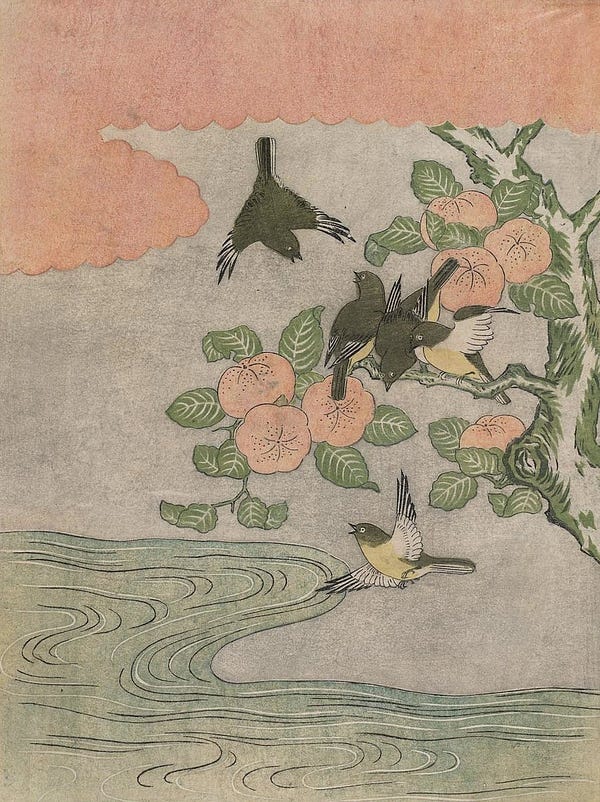
Nigel Slater on quince, “It is a voluptuous, even magnificent fruit to look at, like a Rubens bottom. (There is one in my dish right now that is the spitting image of his Bacchus.)..”
Mogwa-hwachae (모과화채; ‘quince punch’) is made with Chinese quince slices preserved in sugar with slices of mandarin in honeyed water. In the seventeenth and eighteenth centuries, Korean scholars popularised and revived tea drinking, using quince to sweeten and fragrance their tea.
Marcus Samuelsson’s spicy quince sambal is influenced by Cape Malay cooking. I think it would be lovely with fish. Jan van Riebeeck, the station commander of the Dutch East Indies Company is believed to have planted the first quince trees from pips that he brought from Holland during the colonisation of South Africa. Andrew Unsworth writes about a Karoo town that once held the world record for the most quince hedges. “When it was established in the 1850s, each Murraysburg resident was required to plant a quince hedge.” Few remain. “Many country kids remember eating hard slices of raw sour quince with salt,” he adds.
In ‘Scents and Flavours: A Syrian Cookbook’ translated by Charles Perry with a foreword by Claudia Roden, there’s an intriguing use of quince fuzz where it is put in ‘good ambergris’ made into wicks. I love the sound of raisins pickled with mint, sweetened wine vinegar, spices and pistachios. “You can add pieces of quince and roses too if you wish”. The entire book is a labour of love and scholarship and pays proper tribute to what Roden describes as “the cuisine of a sensual society.”

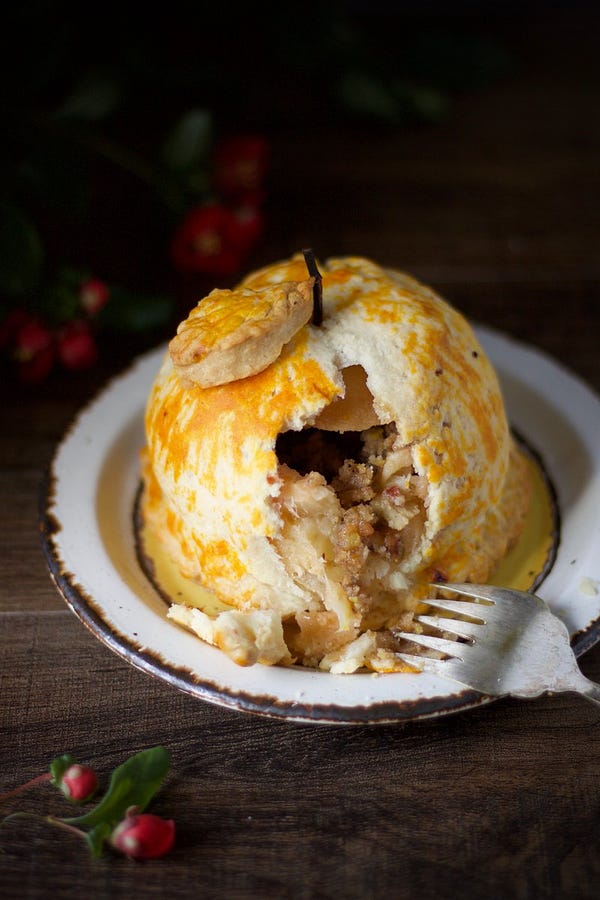
Ivan Day’s quince tart in the FT and Linda Duffin’s quince conserve.
A 16th century ‘blaunch powder’ for the roasting of quinces.
A recipe for Khoresh-e-beh.
A recipe for Madeira and Quince Braised Duck Legs by Ed Smith in The Guardian sounds divine.
Caroline Eden’s ‘Red Sands’ contains several luscious recipes using quince, including a ‘Lamb and Quince Plov For Imenjon’, who fed Soviet mountaineers at the base camp of Peak Lenin, close to the border of Tajikistan. A ‘Blushing Quince Jam’ is also from Uzbekistan, where the quince is treasured. It is enriched with butter to be served with pancakes or bread. Here’s an interview with Caroline.

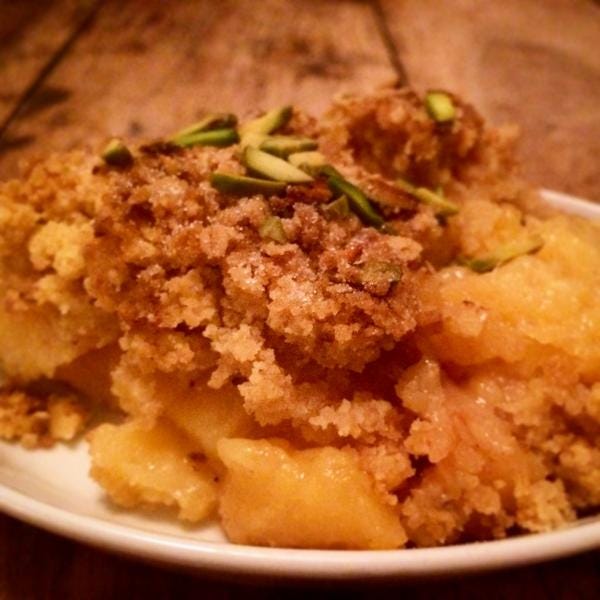
Helene Saberi’s recipe for a Kabul quince and yoghurt trifle and a recipe for preserved quince from the book Parwana by Durkhanai Ayubi. “In Afghanistan, quince grows in abundance and is a favoured fruit from which to make jams and preserves.” The jewel-brightness of the quince is enhanced by the addition of beets.

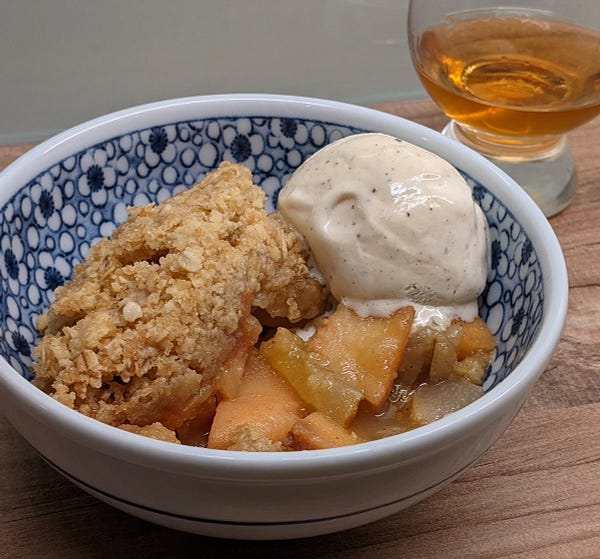
“In The Good Housewife’s Jewel (1595), Thomas Dawson provides a recipe for A Tart That is Courage to a Man or Woman, which instructs the reader to boil quince with sweet potato, burdock root, sugar and cock sparrow brains along with spices and rose water ‘till it be something big,’ writes Sam Bilton.
Nik Sharma on the science of quince’s pectin.
A concise musing on the possible meaning behind Still-life with Quince, Cabbage, Melon and Cucumber, painted by Juan Sánchez Cotán. I love the idea of a quince “flying away to grace.”
And the last word goes to Andrew Janjigian of Wordloaf:




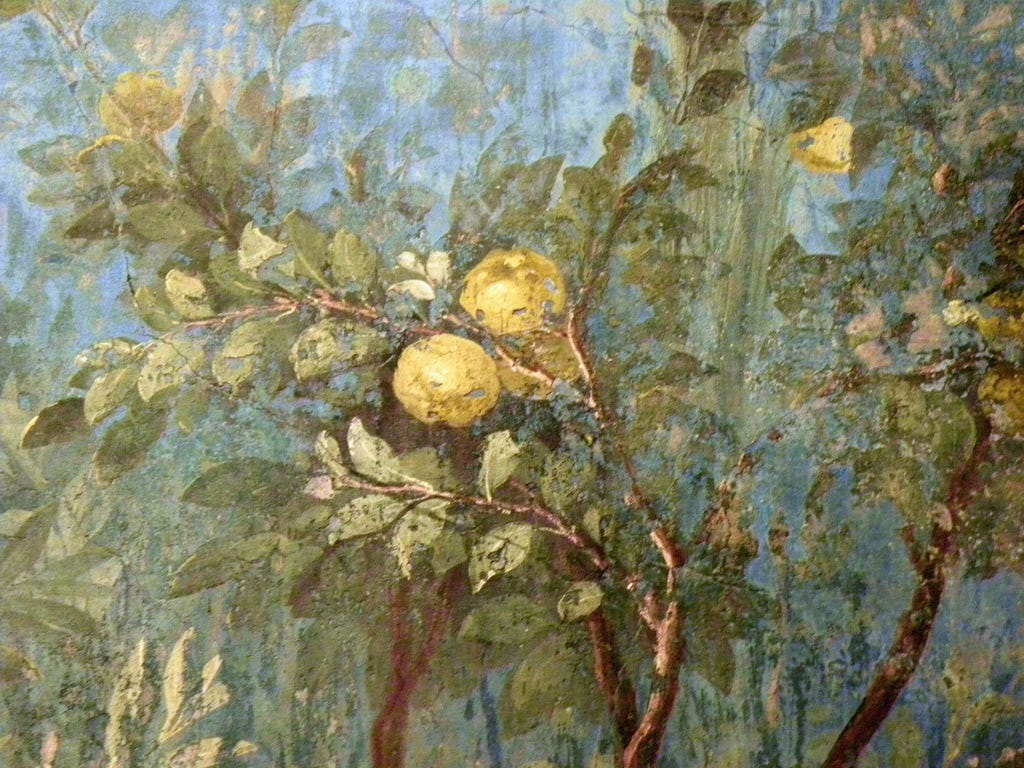

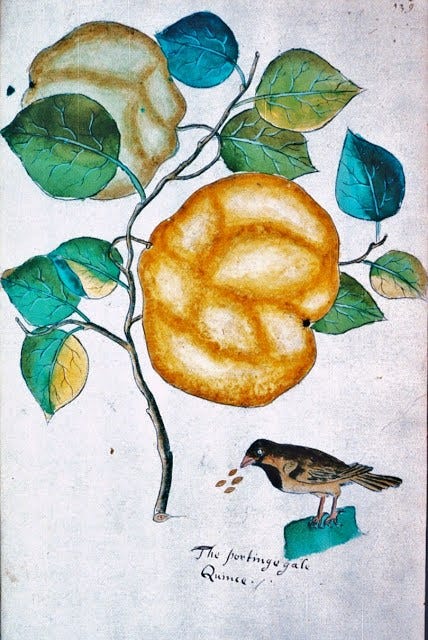
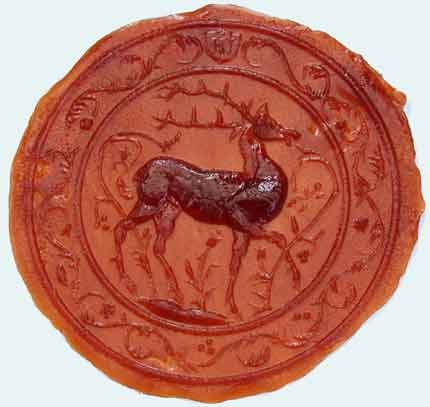
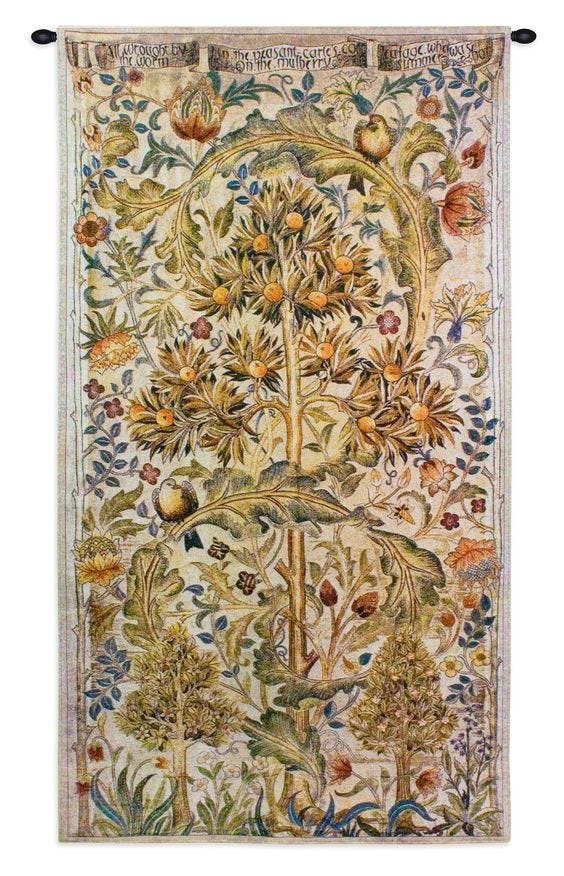

Just lovely - thank you. I will be picking English Quince from a tree in the middle of East Dulwich in south east London in the next week or so. Crumbles, jam, jelly and the odd Turkish inspired lamb and quince stew curtesy of Claudia Rodens beautiful book 'Arabesque' will follow.
Best wishes
Pam